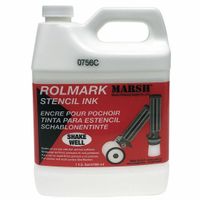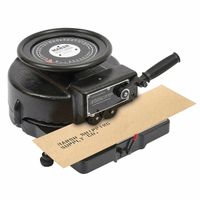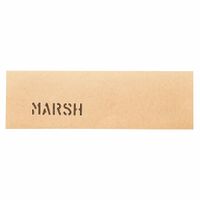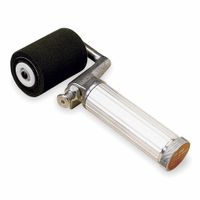Call +(254) 703 030 000 / 751 483 999 / 721 704 777
- Home
- Packaging Shipping
- Package Labels Shipping Equipment
- Shipping Stencils
.....Read More
Frequently Asked Questions
What are shipping stencils used for?
Shipping stencils are used for marking and labeling packages, crates, and containers to ensure proper handling, identification, and delivery during transportation. They serve several key purposes:
1. **Identification**: Stencils provide clear and consistent labeling of shipping information such as addresses, company names, and contact details. This helps in the accurate identification of packages and prevents misdelivery.
2. **Handling Instructions**: They convey important handling instructions like "Fragile," "This Side Up," or "Handle with Care," ensuring that handlers are aware of how to properly manage the package to prevent damage.
3. **Compliance and Regulations**: Shipping stencils help in meeting regulatory requirements by displaying necessary symbols and information, such as hazardous material warnings or international shipping codes, ensuring compliance with shipping laws and standards.
4. **Branding**: Companies use stencils to apply logos and branding on shipping containers, enhancing brand visibility and recognition throughout the supply chain.
5. **Inventory Management**: Stencils can be used to mark inventory numbers or codes, aiding in efficient tracking and management of goods during transit and storage.
6. **Cost-Effectiveness**: Reusable stencils offer a cost-effective solution for marking multiple packages, reducing the need for printed labels and minimizing waste.
7. **Durability**: Stenciled markings are often more durable than labels, resisting wear and tear during long shipping journeys and in various environmental conditions.
Overall, shipping stencils are an essential tool in logistics and supply chain management, ensuring that goods are properly marked for safe and efficient transportation.
How do shipping stencils compare to adhesive labels?
Shipping stencils and adhesive labels are both used for marking packages, but they have distinct characteristics and applications.
Shipping stencils are reusable templates made from materials like plastic or metal, used to apply information directly onto a package with paint or ink. They are durable, cost-effective over time, and ideal for repetitive use, especially in environments where packages are exposed to harsh conditions. Stencils are less likely to be damaged by water, abrasion, or extreme temperatures, making them suitable for industrial settings. However, they require more time and effort to apply compared to adhesive labels and are less flexible in terms of design changes.
Adhesive labels, on the other hand, are pre-printed or printable stickers that can be easily affixed to packages. They offer high flexibility in design, allowing for detailed graphics, barcodes, and color variations. Labels are quick to apply and can be customized for each shipment, making them ideal for businesses with diverse shipping needs. However, they can be susceptible to damage from moisture, tearing, or fading, which might affect the readability of the information. Labels are generally more suitable for controlled environments and are often used in retail and consumer goods industries.
In summary, shipping stencils are best for durability and cost-effectiveness in harsh conditions, while adhesive labels offer flexibility and ease of use for varied and detailed information. The choice between the two depends on the specific needs of the shipping process, including environmental conditions, volume, and the level of detail required in the package markings.
What materials are shipping stencils made from?
Shipping stencils are typically made from materials that offer durability, flexibility, and reusability. Common materials include:
1. **Mylar**: A type of polyester film, Mylar is popular for its durability and flexibility. It is resistant to tearing and can be easily cleaned, making it ideal for repeated use.
2. **Oilboard**: Also known as stencil board, oilboard is a treated paperboard that is resistant to ink bleed-through. It is cost-effective and suitable for single or limited use.
3. **Plastic**: Various plastics, such as polyethylene or polypropylene, are used for their lightweight and durable properties. They are resistant to chemicals and moisture, making them suitable for outdoor use.
4. **Metal**: Metals like aluminum or brass are used for heavy-duty stencils. They are extremely durable and can withstand harsh environments, making them ideal for long-term use.
5. **Vinyl**: Adhesive vinyl stencils are used for temporary applications. They adhere to surfaces to prevent paint bleed and can be easily removed after use.
6. **Acrylic**: Acrylic stencils are rigid and durable, offering a clear view of the surface beneath. They are suitable for precise applications.
These materials are chosen based on the specific requirements of the shipping process, such as the type of surface, the environment, and the frequency of use.
How do you apply shipping stencils?
To apply shipping stencils, first gather your materials: the stencil, a stencil brush or sponge, stencil adhesive or tape, and the paint or ink suitable for your surface. Begin by preparing the surface where the stencil will be applied; it should be clean, dry, and free of dust or debris to ensure proper adhesion and a clean application.
Position the stencil on the desired area of the shipping container or package. Use stencil adhesive spray for a temporary bond or secure the stencil with tape to prevent movement during application. Ensure the stencil is flat against the surface to avoid paint bleeding underneath.
Dip the stencil brush or sponge lightly into the paint or ink, then dab off excess on a paper towel or palette to prevent overloading. Using a stippling or dabbing motion, apply the paint through the stencil openings. Avoid brushing or sweeping motions, as these can cause paint to seep under the stencil edges.
Work from the edges of the stencil towards the center to minimize the risk of paint bleeding. Apply multiple light layers if necessary, allowing each layer to dry slightly before applying the next, to achieve the desired opacity and coverage.
Once the paint is dry to the touch, carefully remove the stencil by lifting it straight up to avoid smudging. If using adhesive, gently peel it off to prevent damage to the stencil or surface. Clean the stencil immediately after use with warm water and mild soap to remove any residual paint, ensuring it is ready for future applications.
Allow the stenciled area to dry completely before handling or shipping the package to ensure the design remains intact and smudge-free.
Can shipping stencils be reused?
Yes, shipping stencils can be reused. Stencils are typically made from durable materials such as plastic, metal, or heavy-duty cardboard, which allows them to withstand multiple uses. Reusing stencils is both cost-effective and environmentally friendly, as it reduces waste and the need for new materials.
To ensure longevity, stencils should be properly cleaned and stored after each use. Cleaning involves removing any residual paint or ink, which can be done with appropriate solvents or water, depending on the type of paint used. Proper storage involves keeping them flat or hanging them to prevent warping or bending, which can affect their accuracy in future applications.
Reusability also depends on the stencil's design and the frequency of use. Simple designs with fewer intricate details are more likely to withstand repeated use without damage. Additionally, stencils used with spray paint or ink pads tend to last longer than those used with brushes, as brushes can apply more pressure and cause wear over time.
In commercial settings, reusable stencils are often preferred for consistent branding and labeling, as they ensure uniformity across multiple packages. However, it's important to periodically inspect stencils for any signs of wear or damage that could affect their performance, such as frayed edges or distorted shapes.
Overall, with proper care and maintenance, shipping stencils can be reused multiple times, making them a practical choice for businesses and individuals looking to optimize resources and minimize environmental impact.
What are the benefits of using shipping stencils?
Shipping stencils offer several benefits:
1. **Consistency**: They ensure uniformity in labeling, which is crucial for brand recognition and compliance with shipping regulations.
2. **Efficiency**: Stencils speed up the labeling process, reducing time spent on marking packages manually.
3. **Cost-Effective**: Reusable stencils lower costs associated with purchasing labels or hiring additional labor for manual labeling.
4. **Durability**: Made from materials like metal or plastic, stencils withstand repeated use and harsh shipping environments.
5. **Clarity**: They provide clear, legible markings that reduce the risk of misinterpretation during transit.
6. **Customization**: Stencils can be tailored to include specific information such as logos, handling instructions, or destination details.
7. **Versatility**: Suitable for various surfaces and materials, stencils can be used on boxes, crates, and pallets.
8. **Compliance**: They help meet international shipping standards and regulations by ensuring proper labeling.
9. **Environmental Impact**: Reusable stencils reduce waste compared to single-use labels.
10. **Security**: Consistent and clear labeling helps in tracking and reduces the risk of lost or misrouted shipments.
How do you clean and maintain shipping stencils?
To clean and maintain shipping stencils, follow these steps:
1. **Preparation**: Gather necessary materials such as mild detergent, warm water, soft brushes, sponges, and lint-free cloths. Ensure you have a well-ventilated workspace.
2. **Initial Cleaning**: Remove excess paint or ink by gently wiping the stencil with a damp cloth. Avoid using abrasive materials that could damage the stencil.
3. **Soaking**: Fill a basin with warm water and add a small amount of mild detergent. Submerge the stencil and let it soak for a few minutes to loosen any stubborn residue.
4. **Scrubbing**: Use a soft brush or sponge to gently scrub the stencil, focusing on areas with dried paint or ink. Be careful not to bend or tear the stencil during this process.
5. **Rinsing**: Rinse the stencil thoroughly with clean water to remove any soap residue. Ensure all detergent is washed away to prevent any potential damage to the stencil material.
6. **Drying**: Pat the stencil dry with a lint-free cloth. Lay it flat on a clean surface to air dry completely. Avoid direct sunlight or heat sources that could warp the stencil.
7. **Storage**: Store stencils flat or hanging to prevent bending or warping. Keep them in a dry, cool place away from direct sunlight and moisture.
8. **Regular Maintenance**: After each use, perform a quick clean to prevent buildup. Regular maintenance will extend the life of the stencil and ensure consistent results.
9. **Inspection**: Periodically inspect stencils for signs of wear or damage. Replace any stencils that are torn or excessively worn to maintain quality in your shipping operations.



